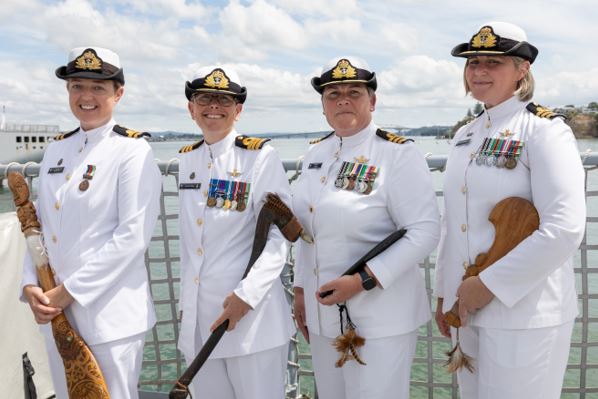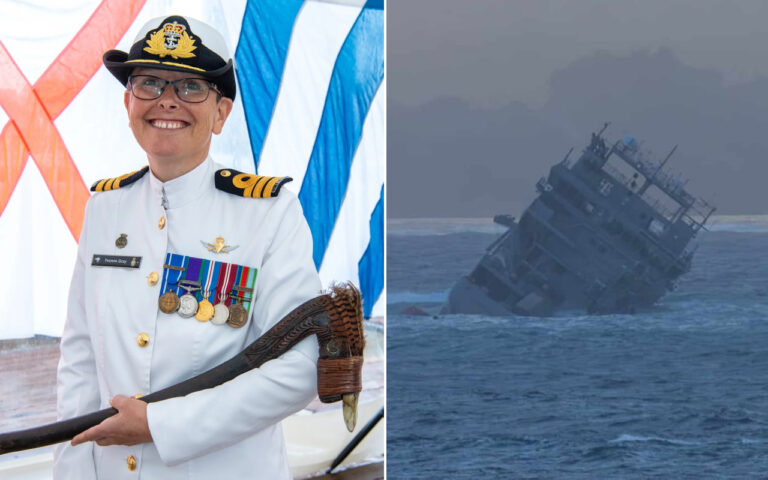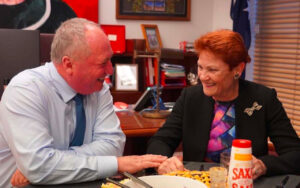A New Zealand Navy ship captained by a lesbian ran aground and sank off the coast of Samoa last month as a result of human error, including failure to turn off autopilot, a damning report has found.
Chief of Navy Rear Admiral Garin Golding on Friday revealed the findings of an interim Court of Inquiry into the October 5 sinking of the $100 million HMNZS Manawanui, which was commanded by UK-born homosexual Yvonne Gray. She is one of three people now likely to face a disciplinary process.
“The direct cause of the grounding has been determined as a series of human errors which meant the ship’s autopilot was not disengaged when it should have been,” Rear Admiral Golding said.
“The crew did not realise Manawanui remained in autopilot and, as a consequence, mistakenly believed its failure to respond to direction changes was the result of a thruster control failure.
“Having mistakenly assessed a thruster control failure, standard procedures should have prompted ship’s crew to check that the ship was under manual control rather than in autopilot. This check did not occur.
“Remaining in autopilot resulted in the ship maintaining a course toward land, until grounding and eventually stranding.”



He said a separate disciplinary process would begin once the wider Court of Inquiry was completed, and that those likely to be examined for responsibility were the pilot, the officer overseeing the pilot, and the ship’s commanding officer.
Defence Minister Judith Collins, who called criticism of Captain Gray after the disaster “misogynistic” and praised her for “saving lives” by ordering an evacuation, said on Friday “we were all terribly disappointed in what happened” and said New Zealanders could have full confidence in how the Navy and Defence Force were responding.
After the sinking of the ship which was one of just nine in the New Zealand Navy and the first lost at sea since World War 2, Captain Gray’s position as commander came into question after it was revealed she had been promoted amid a push for diversity and inclusion in the Defence Force.
She was lauded in a June 2023 New Zealand Department of Defence press release celebrating her and three other female commanders, in which one gushed about a culture change in the navy due to a “focus on diversity, equity and respect for personnel”.
Many New Zealanders asked why Captain Gray, who moved to New Zealand with her “wife” in 2012, was given command of a ship ahead of local candidates, and YouTuber I, Malcontent slammed the incident and the New Zealand Defence Force’s diversity equity and inclusion (DEI) policies in a scathing video.
“Captain Yvonne Gray has become the poster child of the New Zealand Navy to show how ‘inclusive’ they are,” I Malcontent said in his video.
“The Navy boasts about the number of females they’ve been recruiting and placing into senior roles, and Yvonne, being a lesbian, gives them another ‘box’ to tick off.
“Being female and lesbian seems good enough reason to me to give her the keys to a $100 million ship.”

The YouTuber catalogued years of positive media coverage given to Captain Gray, and noted that another of the female captains praised alongside Ms Gray, Fiona Jameson, had crashed her own ship in May this year.
“Here’s a photo of them together celebrating International Women’s Day, the Boat Crashers Club,” he said.
“No need to test for any competency, let’s celebrate that the navy is now 27.4% female. Look at all those medals on their chests, I wonder what battles they fought for all those accolades or if these were just participation trophies.”
He also highlighted the blanket media coverage of the praise for Captain Gray in managing to get her 75 crew off the ship without the loss of life, and mocked the Defence Minister for calling the evacuation a “triumph”.
“Imagine putting a bunch of people in danger, then when everyone luckily survives the danger, and your nation is $100 million poorer, you get applauded as the hero in the situation,” he said.

I, Malcontent then examined the NZDF’s “LGBTTIQ+ Inclusion Plan” which he called “truly shocking”.
“[it] manipulates all staff, and particularly their senior staff into submission,” he said.
“One example being that anyone who expresses ‘homophobia’ or ‘transphobia’ should be disciplined, and managers are encouraged to show support by wearing rainbow lanyards.
“Now what do you think happens if a manager says that the lanyards are a bit silly or doesn’t want to wear one? That’s right, they get classed as a ‘homophobe’ and will be disciplined.”
But I, Malcontent was not the only critic of Captain Gray’s, with social media filling up with comments linking the sinking with the navy’s DEI policies.
“Between 2012 and 2022 – the Royal New Zealand Navy could not produce one New Zealand-born officer to command a Royal New Zealand Navy ship,” said a Kiwi social media user, while political commentator Aussie Cossack simply said: “Diversity hire detected”.
“Perhaps if the NZ Navy and its midget lesbian DEI hire Yvonne Gray (She/Her) had been less motivated by DEI/gay politics than by a desire to avoid driving $150M naval vessels into reefs, the NZ Navy would still have its specialist dive and hydrographic vessel HMNZS Manawanui,” said an X user.

Timeline:
- On Saturday 5 October 2024, HMNZS Manawanui was conducting survey operations on the southern side of Apia, Samoa in a strong breeze of up to 25 knots and moderate swell.
- The survey was conducted in a box-shaped area, running east to west in survey lanes that start on the outside, working inwards.
- At about 6.15pm, the ship’s crew attempted a routine turn to starboard, initially to a course of 340 degrees, within the survey area, as part of a turn. The crew attempted to turn off the 340 degree course to starboard towards an easterly course but the ship did not respond as intended.
- Shortly after, Manawanui left the approved survey area, and in an effort to stop the ship, the crew conducted further actions that they believed should have resulted in the ship essentially braking.
- Manawanui did not slow or stop, and instead the ship started to accelerate towards the reef, grounding for the first time at or about 6.17pm at a speed of more than 10 knots.
- The ship then travelled around 635 metres (400 yards) before becoming stranded, grounding multiple times along the way.
- Full control of Manawanui’s propulsion system was not regained until 10 minutes later, at 6.27pm, when the ship’s autopilot was disengaged. The inability to turn the ship to an easterly direction from the 340 degree course and stop the ship is attributed to the ship being in autopilot mode.
- Unsuccessful attempts were then made to manoeuvre the ship off the reef.
- Manawanui was brought to emergency stations after the grounding, and searches were conducted to check for damage.
- No damage or flooding was detected inside the ship. However, stability assessments made after the grounding indicated Manawanui was no longer stable.
- At approximately 6.46pm, about 30 minutes after the initial grounding, the decision was made to abandon ship.
- The timeliness of the decision to abandon ship and to keep Manawanui’s generators running contributed to the successful abandonment process and likely prevented serious injuries or death.
- The ship suffered a series of catastrophic fires after being abandoned, before capsizing and sinking on the morning of Sunday 6 October.

























